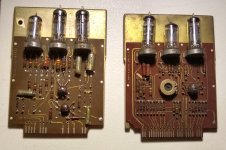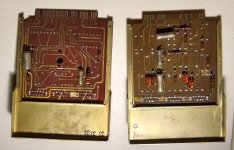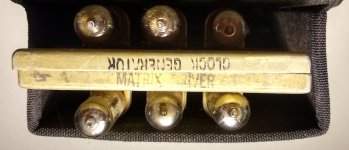Bruce Tomlin
Veteran Member
I found these at a thrift store bin a few years ago and grabbed them because they looked like computer modules. I came across them again today and decided to look up the part numbers. One of them had a match that indicated they were boards from an LGP-30 minicomputer! This is the model that is famous for Mel's blackjack program.
CLOCK GEN 309669
MATRIX DRIVER 309673-A
CLOCK GEN 309669
MATRIX DRIVER 309673-A



